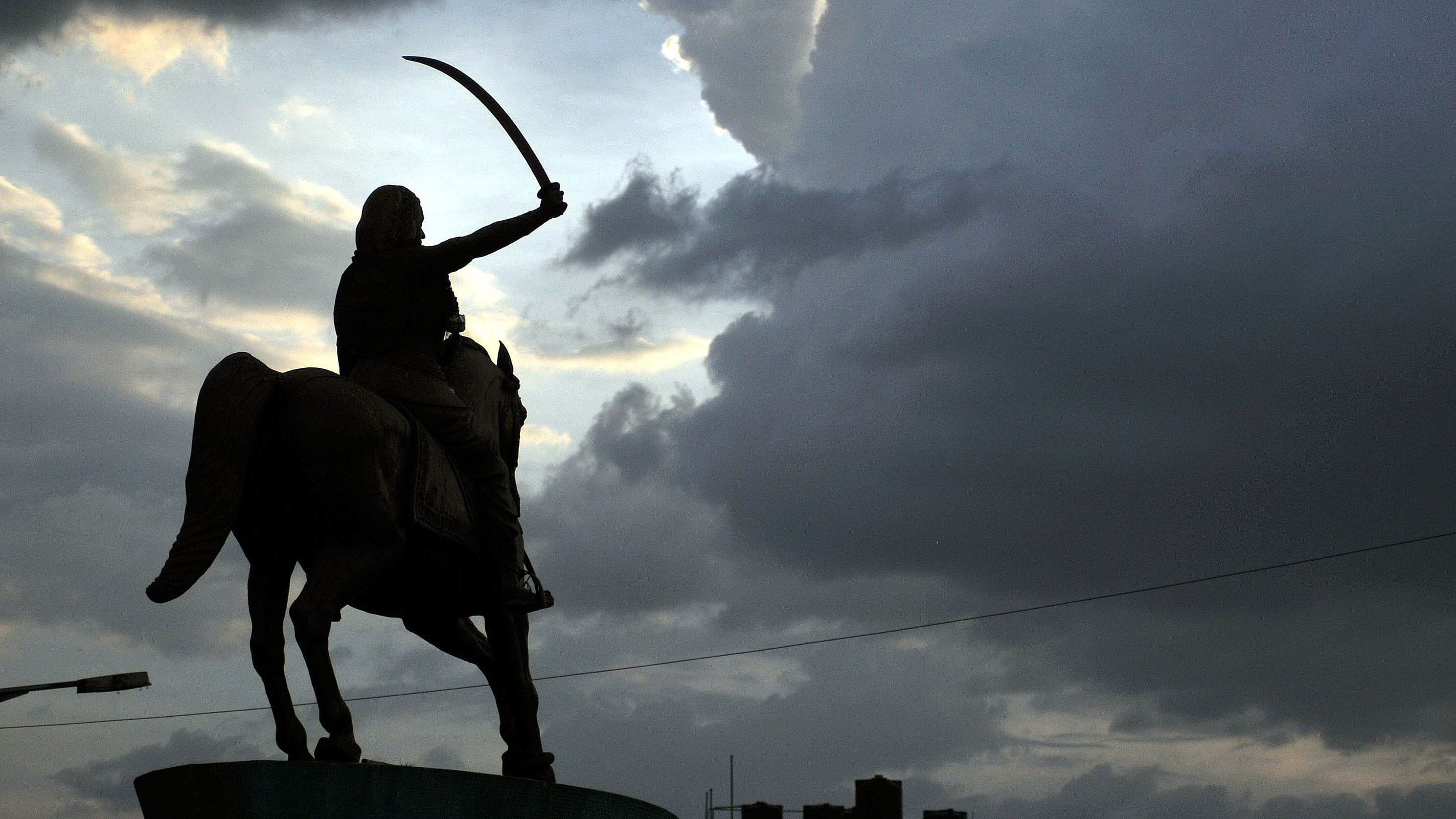
Kittur Rani Chennamma's statute near Town Hall in Bengaluru.
Credit: Special Arrangement
On Feb 21, 1829, a fearless queen, who had valiantly fought against the British, died. She had led Kittur, a small kingdom in present Belagavi, to victory against the formidable British in 1824. Though Kittur fell a few months later, the flame of independence ignited by Rani Chennamma would lead all the way to the first war of Indian independence in 1857.
Rani Chennamma was the second wife of Mallasarja of the Desai family, the rulers of Kittur. She was brave and well-trained in horse riding, sword fighting and archery. Legend has it that she met the king Mallasarja while hunting a tiger.
Mallasarja had ascended the throne in 1782. “His rule saw a critical period in the history of India. On one hand, the British, French and Portuguese were competing with each other to conquer different regions of India. On the other hand, a number of princely states were fighting with each other and trying to get favour from the foreign invaders,” says noted scholar S S Wodeyar, who authored a book on Rani Chennamma in 1976 after researching through the materials preserved in the archives of the Indian Office, London.
Though a small state, Kittur was often caught up in wars with Tipu Sultan of Mysore and the Peshwas of Maharashtra. This enabled the British to take advantage of the situation. When Mallasarja died in 1816, his eldest son Shivalinga Rudra Sarja ascended the throne, though he had failing health and little interest in politics. That was when Chennamma, who had stood by her husband in various battles and in managing the affairs of the State, took the responsibility on her shoulders. Under her able administration and foresight, Kittur prospered further.
The first armed resistance
The British always had an eye on Kittur. When Shivalinga died of tuberculosis in September 1824, the British refused to recognise the child adopted as heir to the throne. They wanted to annex Kittur under the pretext of ‘doctrine of lapse’. Rani Chennamma loved her land and the people deeply and was determined to fight for their freedom. Hers was the first armed resistance against the might of the British Empire.
On October 23, 1824, when Thackeray, the Principal Collector of Dharwar, brought British artillery to the entrance of the fort wall and threatened to blast the gate, he was in for a surprise. The gates of Kittur fort were thrown open and the valiant army of Kittur thundered out, launching a fierce onslaught on the British army. Sitting on horseback, Rani Chennamma directed the military operations from the ramparts of the fort. Thackeray was killed, and so were 80 British soldiers. It was a decisive victory over the British.
Knowing the futility of war, Chennamma offered to release the two British officers held hostage subject to the condition that they wage no further war on Kittur. William Chaplin, Commissioner of the Deccan agreed to this, but did not keep his word. The British regrouped, and in the second war of Kittur, Chennamma was outnumbered and ultimately captured on December 5, 1824. She was held in Bailhongal fort, where she breathed her last. S S Wodeyar cites February 2, 1829, as her date of death, while other historians like Nanditha Krishna believe it is February 21, 1829.
The British perspective
Scanning through archives, I zeroed in on the chapter on Belgaum in the 19th-century Bombay Gazetteer, to check the dates and events, fully aware that the narration would be that of the British.
The Gazetteer revealed that Kittur was indeed a prosperous kingdom nurtured by its rulers. It records that in 1802, ‘Sadashiv Pandit held the fort and country round Belgaum yielding a yearly revenue of £4,000 (Rs 40,000), and kept a force of 1,000 horses and 2,000 (soldiers on) foot; Mallasarja, desai of Kittur, who held the country round Kittur yielding a yearly revenue of £40,000 (Rs 4,00,000) and kept a force of 1,000 horses and 4,000 (soldiers on) foot’.
The chapter titled ‘Kittur Rising 1824’ reveals Thackeray’s frustration that the men guarding the Kittur state treasury are not listening to him. He complains that they ‘refused without the orders of Chinavva’.
But even the British could not help mentioning that ‘The Desais of Kittur had been very popular especially with the poorer classes of their people’.
There was never a united fight against the British, the princely states fought against each other. Maharshi Dayanand Saraswati, who was the first to give the call for Swaraj and ‘India for Indians’ in 1876, had said in anger and exasperation, ‘British are not ruling us because of their bravery, it is because of our weakness as a divided society'.
The British quit India three-fourths of a century back. However, the colonial legacies of divide-and-rule and unimaginable greed must be fought even today. In this journey, Rani Chennamma remains a guiding star with her bravery, honesty, patriotism and leadership.